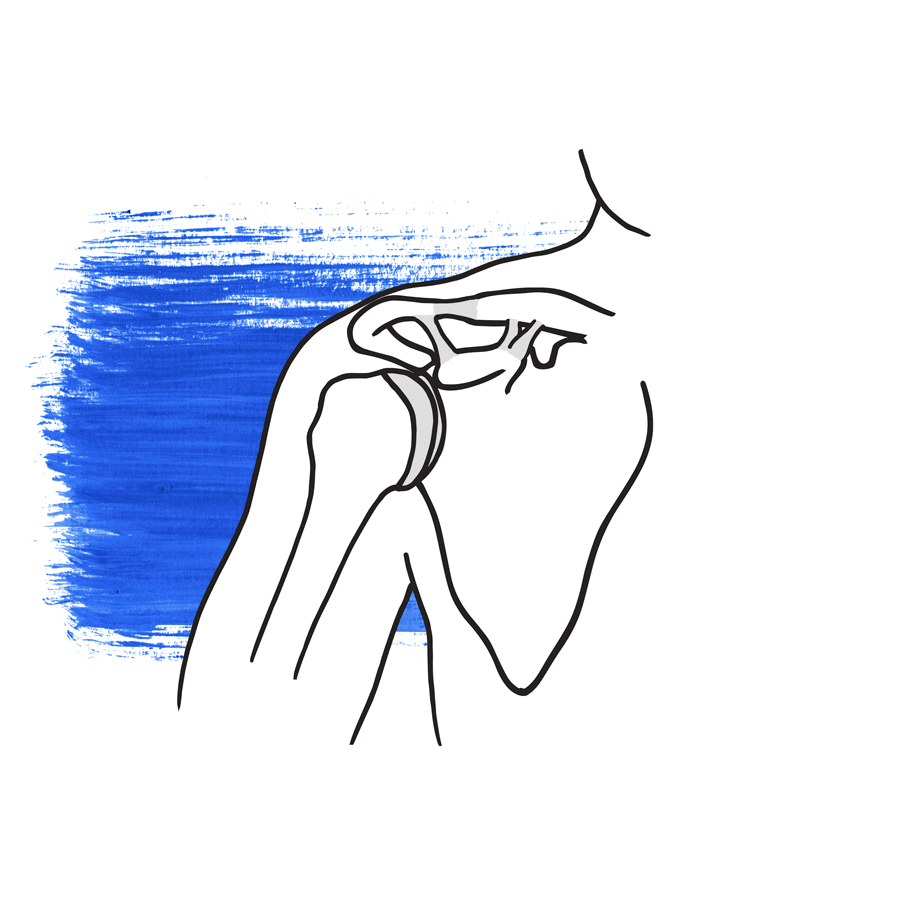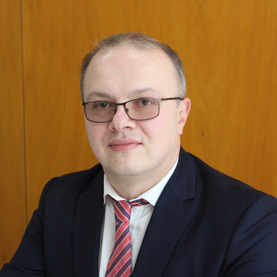The shoulder is the most mobile joint in our body. It consists of a ball known as the humeral head and a socket known as the glenoid. The high mobility of the shoulder requires a very shallow socket (glenoid). Around the socket there is a bumper (cartilage rim) called labrum which, together with a series of ligaments connecting the ball to the socket, prevent the ball slipping out of joint. These are called static stabilisers of the shoulder joint. On top of these structures there are four muscles called the rotator cuff connecting the scapula (shoulder blade) with the humerus (arm bone) and dynamically stabilising the shoulder when they contract. When the shoulder dislocates the traumatic force overcomes the blocking effect of the stabilisers and the labrum and ligaments can tear if the patient is young. Sometimes the rotator cuff muscles can tear if you are over 40 years of age. The shoulder can dislocate anteriorly (more common) or posteriorly. Shoulder dislocation is an emergency and requires urgent relocation under anaesthesia followed by a sling for 2 weeks and physiotherapy. A clinical examination by a specialised shoulder surgeon is recommended for active patients involved in sports activity.

Shoulder instability means that the shoulder may dislocate (be pulled out of joint) or subluxate (move more than it should). Instability may develop as a result of an injury (traumatic instability) or as a result of laxity (atraumatic instability). The delicate balance of ligaments, bones and muscles in the shoulder joint can easily be lost when any of these is injured or overstretched and the joint can become unstable. A third cause of instability is a result of abnormal muscle movement (aberrant large muscle activation and simultaneous suppression of the rotator cuff).
Traumatic shoulder instability can start after an initial shoulder dislocation following an injury. The shoulder keeps dislocating and the younger and more active the patient is when the first dislocation occurs, the higher the chance that recurrent instability will develop. If the first dislocation occurs before the age of 20 there is nearly 100% chance that the shoulder will dislocate again. After the age of 35 this risk reduces to less than 10% therefore the treatment should be tailored to each patient’s need.
As a result of the injury usually the antero-inferior part of the labrum (a rim of cartilage around the socket of the shoulder joint) is peeled off the glenoid (the socket) and, as a result, the anterior ligaments attached to the labrum lose their tightness and become lax. At the bony level, the rim of the socket can be fractured (usually a small avulsion fracture) and the ball (humeral head) sitting dislocated on the rim develops a groove called a Hill Sachs lesion. These changes reduce the area of contact between the ball and the socket and can lead to instability. The damage to the antero-inferior labrum is called a Bankart lesion, and if the bone is involved is called a bony Bankart.
Depending on the age at the first dislocation there is a risk of dislocating the shoulder again. If this happens, a Bankart Repair surgical procedure is necessary.
Bankart Repair is an arthroscopic procedure (keyhole) and consists in restoring the tension of the ligaments in front of the shoulder and reattachment of the torn labrum. To achieve this, three small incisions are made, and a camera and instruments are inserted inside the joint. The patient normally goes home same day and is advised to wear a sling for 4 weeks. Full return to activity including sports is recommended at 4 months postoperatively.
Failure of a previous stabilisation procedure requires a more complex surgical procedure called Latarjet coracoid bone transfer to prevent shoulder from dislocating. This can be performed as a primary procedure when there is significant bone loss following a shoulder dislocation. Mr Negru performs Latarjet bone blocks arthroscopically or open.
Latarjet procedure consist in the transfer of the coracoid process (a small hook of bone in front of the shoulder) to the antero-inferior part of the glenoid through a split in the subscapularis muscle (part of the rotator cuff). The coracoid bone is moved together with the tendinous attachment of the conjoint tendon made of the short head of biceps and coracobrachialis tendons that contribute further to the stability of the shoulder following the procedure. Mr. Negru usually does the procedure arthroscopically but open Latarjet can be sometimes indicated.
Following surgery, a sling is required for 4 weeks and return to full activity including sports is expected at 4 months postoperatively.
is a form of laxity of the glenohumeral joint in multiple directions. It can be congenital (be born with it) or a result of repetitive stretching of the capsule at the extreme of range of motion (usually in overhead sports). It can develop in patients with lax soft tissues. In this category of people little force is required to subluxate the joint or lead to a full dislocation. Physiotherapy is the main treatment to dynamically stabilise the shoulder by tightening the muscles of the rotator cuff. Surgery is sometimes necessary and consists in thermal capsular shrinkage or capsular plication.
Arthroscopic Capsular plication plication is a keyhole surgery designed to reduce to volume of the joint by folding the capsule to reduce the risk of dislocation. As most of the structures around the shoulder are normal a decision to go ahead with surgery requires a full course of physiotherapy before and a detailed discussion with a surgeon familiar with the procedure. Mr. Negru performs regularly capsular plication with excellent results.
 All these conditions can be treated arthrosocopically in our hospital by Dr. Marius Negru, orthopaedic and trauma surgeon and HC Marbella’s shoulder and elbow specialist.
All these conditions can be treated arthrosocopically in our hospital by Dr. Marius Negru, orthopaedic and trauma surgeon and HC Marbella’s shoulder and elbow specialist.
September 3, 2020
lesen Sie Nachrichten
Tel.: +34 952 908 628
+34 609 148 799
952908898 Onkologie
951829978 Bildgebende Diagnostik
951829947 Gynäkologie
952908897 Fertilitäts-Zentrum
951829947 Physiotherapie